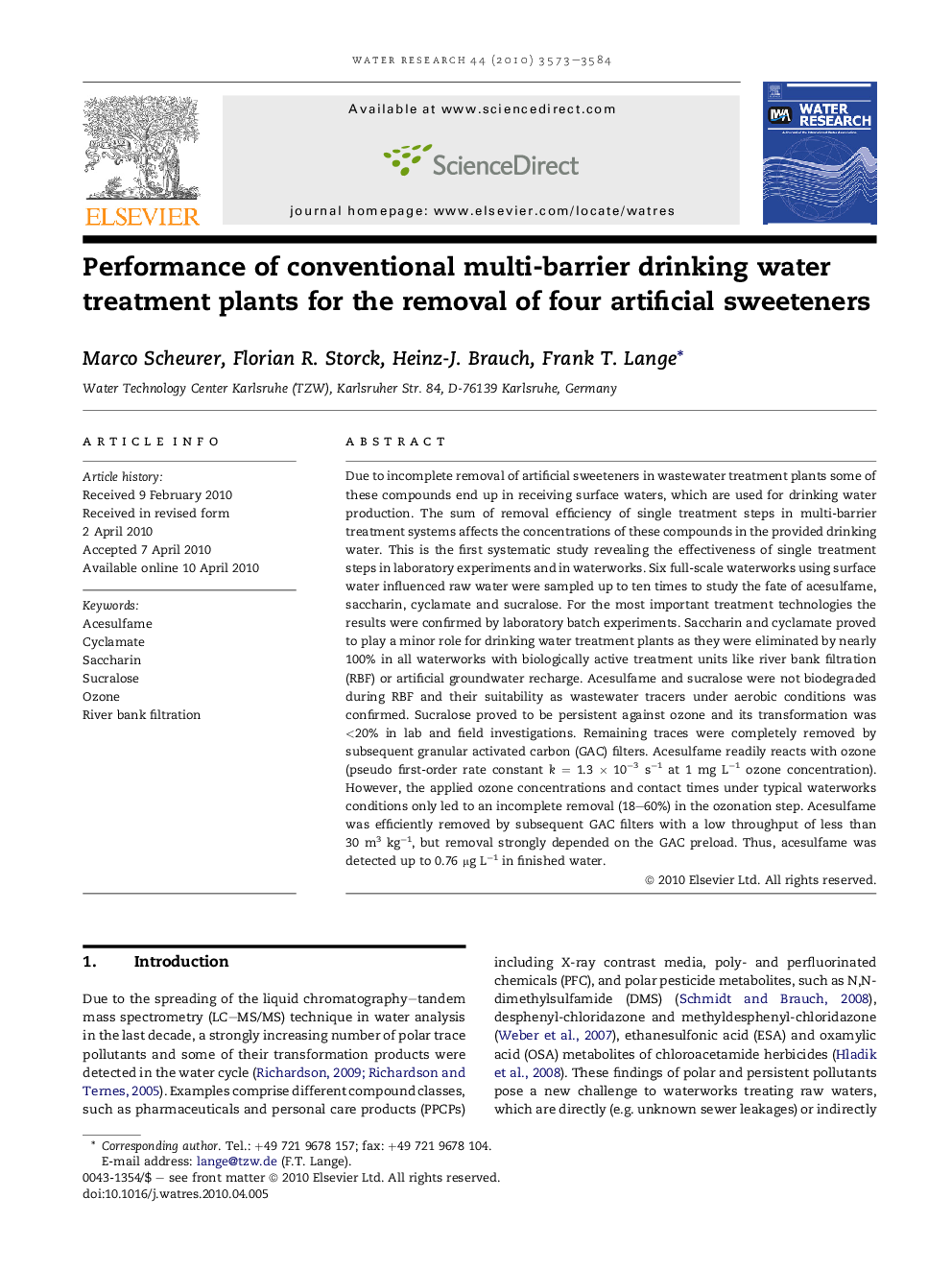| کد مقاله | کد نشریه | سال انتشار | مقاله انگلیسی | نسخه تمام متن |
|---|---|---|---|---|
| 4484055 | 1316908 | 2010 | 12 صفحه PDF | دانلود رایگان |

Due to incomplete removal of artificial sweeteners in wastewater treatment plants some of these compounds end up in receiving surface waters, which are used for drinking water production. The sum of removal efficiency of single treatment steps in multi-barrier treatment systems affects the concentrations of these compounds in the provided drinking water. This is the first systematic study revealing the effectiveness of single treatment steps in laboratory experiments and in waterworks. Six full-scale waterworks using surface water influenced raw water were sampled up to ten times to study the fate of acesulfame, saccharin, cyclamate and sucralose. For the most important treatment technologies the results were confirmed by laboratory batch experiments. Saccharin and cyclamate proved to play a minor role for drinking water treatment plants as they were eliminated by nearly 100% in all waterworks with biologically active treatment units like river bank filtration (RBF) or artificial groundwater recharge. Acesulfame and sucralose were not biodegraded during RBF and their suitability as wastewater tracers under aerobic conditions was confirmed. Sucralose proved to be persistent against ozone and its transformation was <20% in lab and field investigations. Remaining traces were completely removed by subsequent granular activated carbon (GAC) filters. Acesulfame readily reacts with ozone (pseudo first-order rate constant k = 1.3 × 10−3 s−1 at 1 mg L−1 ozone concentration). However, the applied ozone concentrations and contact times under typical waterworks conditions only led to an incomplete removal (18–60%) in the ozonation step. Acesulfame was efficiently removed by subsequent GAC filters with a low throughput of less than 30 m3 kg−1, but removal strongly depended on the GAC preload. Thus, acesulfame was detected up to 0.76 μg L−1 in finished water.
Journal: Water Research - Volume 44, Issue 12, June 2010, Pages 3573–3584